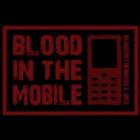Poulsen, Frank Piasecki. Blood in the Mobile. Berlin: Neue Visionen Filmverleih GmbH, 2010. HD, 92 min.
Congo is a country of many natural resources like gold, diamonds, rubber, coltan, and cassiterite. But instead of bringing Congo wealth, these resources have ended up fuelling the bloodiest war since WWII. Five million people have died and an estimated 300,000 women have been raped. Blood in the Mobile is the story of how our phones are connected to illegal mining in Congo (DRC). The film focuses on the mineral cassiterite—a mineral used for producing tin, which is used for the production of all kinds of electronic devices, including mobile phones. Director Frank Piasecki Poulsen visits a mine in Bisie. Bisie is one of the largest and most notorious illegal mines in the region. Mineshafts frequently collapse and miners are buried alive. Child labor, prostitution of under-age girls, and lack of rights and protection of miners are some of the conditions surrounding the cassiterite mining operations. The money from the minerals is financing the war in the region. (Source: Official Film Website).
© 2010 Neue Visionen Filmverleih GmbH. Trailer used with permission.
This film is available at the Rachel Carson Center Library (RCC, 4th floor, Leopoldstrasse 11a, 80802 Munich) for on-site viewing only. For more information, please contact library@rcc.lmu.de.
- Geenen, Sarah. “A Dangerous Bet: The Challenges of Formalizing Artisanal Mining in the Democratic Republic of Congo.” Resources Policy 37, no. 3 (2012): 322–30.
- Hönke, Jana. “New Political Topographies: Mining Companies and Indirect Discharge in Southern Katanga (DRC).” Politique Africaine 4, no. 120 (2010): 105–27.
- Mullins, Christopher W., and Dawn L. Rothe. “Gold, Diamonds and Blood: International State‐Corporate Crime in the Democratic Republic of the Congo.” Contemporary Justice Review 11, no. 2 (2008).


